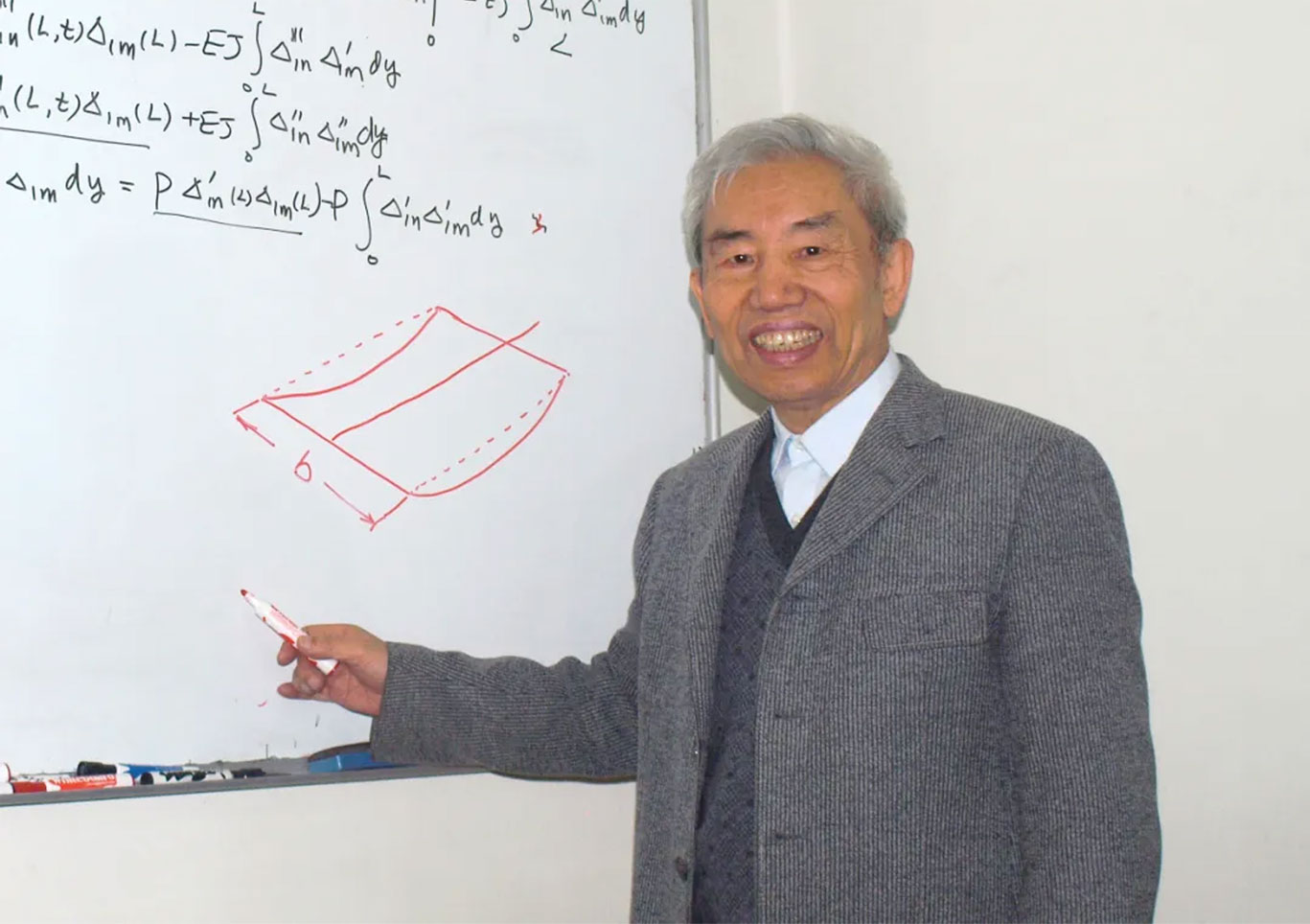Address: No. 92, Xidazhi Street, Nangang District, Harbin



JOIN-USHIT sincerely invite talents from both home and aproad to join in the new course of constructing first-class universities. |
As part of the “Understanding China” ideological and political education campaign launched by the Ministry of Education’s Committee on Work for the Care of the Next Generation, the essay recommended by our school—Exploring Space, Shining Life—has been selected for the 2024 “Understanding China” Outstanding Works Showcase. It was recently broadcast on China Education Television Channel 1 (CETV-1).
The piece was written by counselor Li Zhao of our school, and recited by Ge Ziyao, an undergraduate student from the Grade of 2023. It tells the inspiring story of Professor Liu Tun, who has devoted his life to science and education, achieved remarkable success, and, even at the age of 92, continues to work on the frontlines of research — a vivid reflection of his lifelong dedication and deep love for the country.
Profile of Prof. Liu Tun
Professor Liu Tun was a faculty member of the Department of Astronautical Engineering, School of Astronautics, Harbin Institute of Technology (HIT), and a doctoral supervisor. Before retiring, he served as Director of the Automatic Flight Dynamics Laboratory and Head of the Spacecraft Design Teaching and Research Section at HIT. He held positions such as Board Member of the Chinese Society of Space Science, Board Member of the Tribology Society, Committee Member of the Space Vehicle Control Professional Committee under the Chinese Society of Astronautics and the Chinese Association of Automation, Foreign Academician of the Russian Academy of Cosmonautics, Senior Member of AIAA, and Chair of the National Gas Lubrication Committee.

Exploring Space, Shining Life
Written by Li Zhao | Recited by Ge Ziyao
“As the morning sun rises in the east, it casts its light over Fusang.” The character “Tun” (暾), in Liu Tun’s name, means the rising sun. True to the meaning of his name, Professor Liu Tun—who has devoted his entire life to the advancement of China’s aerospace industry—continues to shine, still working at the forefront of research at the age of 92, driven by a deep love for the nation and lifelong dedication.
In 1949, the People’s Republic of China was founded, ushering in a new dawn of national rebuilding. That same year, Liu Tun came from Beijing to study at Harbin Institute of Technology, beginning his own radiant journey. HIT’s distinctive educational tradition—solid foundational training, hands-on practice, rigorous processes, and a spirit of innovation—equipped Liu with deep engineering expertise. His teaching career, rooted in mutual learning between teacher and student, helped form the lifelong principles that defined his work: precision, systematization, and rigor in both research and education.
A Rising Sun Illuminates the Path
HIT set up new majors in 1962. At the same time, Liu Tun joined the newly established Department of Astronautics, beginning his lifelong bond with space exploration. Amid challenges such as the withdrawal of Soviet experts and lack of resources, Liu and his colleagues worked tirelessly—without computers and elying solely on manual calculations—to develop China’s first high-precision device supported by gas bearings. This achievement earned him the Second Prize of the National Science and Technology Progress Award and the First Prize from the Commission for Science, Technology and Industry for National Defense.
The development of the aerospace industry is not an individual work, but the achievement of an entire generation.Facing a lack of domestic expertise, Liu committed himself to building the field—developing teaching materials, building laboratories, and mentoring students and faculty. His efforts significantly advanced China’s aerospace capabilities and helped nurture a generation of leading experts. Among them is Zhu Zongpeng, chief designer of “Tiangong-2,” who was Liu’s graduate student. Recalling his studies, Zhu shared how scarce teaching materials were at the time, so Professor Liu personally prepared lecture notes, mimeographed them sheet by sheet, and bound them into books. During thesis writing, Liu required every page to be handwritten and revised multiple times—an experience that deeply instilled the principles of precision, caution, and thoroughness, foundational to Zhu’s future work.
Shining Bright, Nurturing All
As early as the 1970s, Liu pioneered the application of multi-body dynamics to aerospace engineering, focusing on spacecraft spacecraft featuring flexible components. His work led to internationally recognized solutions, including identifying the cause of “stalling” in satellite solar panel deployments. His research contributed to major missions such as “Fengyun-3,” which supported the 2008 Beijing Olympics, and the companion satellite for “Shenzhou-7,” which successfully captured footage of the spacecraft in orbit.
Reflecting on Liu’s career, each chapter represents hard-earned success and major national achievements. After being named a foreign academician of the Russian Academy of Cosmonautics, he actively helped introduce crucial spaceflight technologies to China, including the Russian Soyuz crewed spacecraft and a large satellite attitude simulation system—filling significant gaps in domestic capabilities.
A Sunset That Paints the Sky
Now in his nineties, Professor Liu remains active on the research front. He also joined HIT’s “Positive Energy Speakers Group,” dedicated to passing on the university’s core values. With a life deeply intertwined with China’s aerospace journey, Liu brings clarity and depth to the grand theme of “HIT and Chinese Aerospace.” Whether in classrooms, corridors, or under trees on campus, he shares stories with students whenever called on. “The questions from the students reflect their innovative thinking. They’re incredibly valuable,” he says. “I’ll always be there when needed.”
In 2020, during HIT’s centennial celebration, 88-year-old Liu fulfilled a long-held wish: to teach one more class. His 90-minute lecture on Orbital Dynamics was met with enthusiastic applause. “What I can never let go of,” he said, “is the classroom. Teaching has always been my greatest passion.”
To the younger generation, Liu always expresses his hope that they uphold HIT’s standards for rigor and mastery and pursue their dreams and enterprises. Through both his words and actions, he teaches the timeless value of rigor and mastery. Professor Liu has led a life of dedication, with achievements blooming on both sides of the journey—like the rising sun that continues to shine with warmth and vitality.
Recording Session: Ge Ziyao at the Studio
The “Understanding China” campaign is a flagship ideological education initiative launched by the Ministry of Education’s Committee on Work for the Care of the Next Generation. It aims to inspire young students through stories of those around them—told by those who lived them—making history tangible and impactful.
In 2024, under the theme “A Strong Nation Through Education, Striving Together,” the campaign was rolled out across universities nationwide. Nearly 1,000 institutions participated, with over 120,000 students conducting in-person interviews with 26,900 exemplary “Five Olds” (retired cadres, veterans, experts, teachers, and model workers). The effort produced more than 94,000 essays, micro-videos, and stage performances,where over 7.32 million students gained insights through various forums and discussion sessions.
A panel of experts organized by the Ministry of Education reviewed 642 essays, 377 micro-videos, and 50 stage plays submitted by universities nationwide. Ultimately, 60 essays and 31 micro-videos were selected for the 2024 “Understanding China” Outstanding Works Showcase.
Text and Images: Ministry of Education Committee on Work for the Care of the Next Generation, interviewees